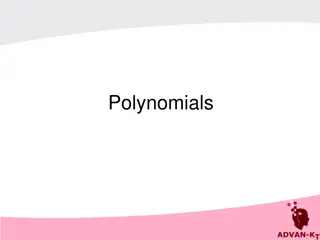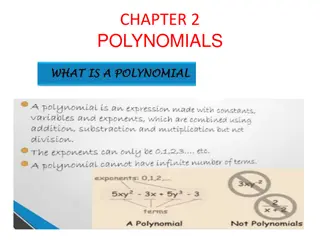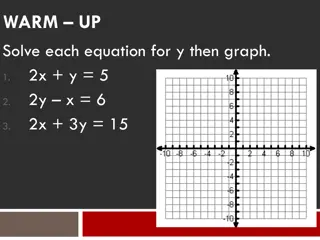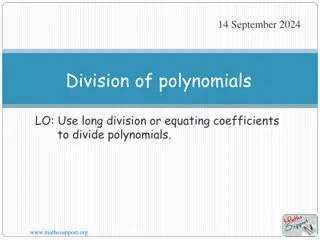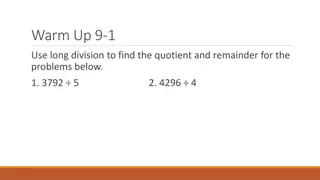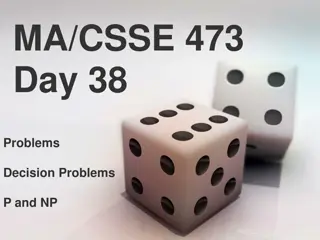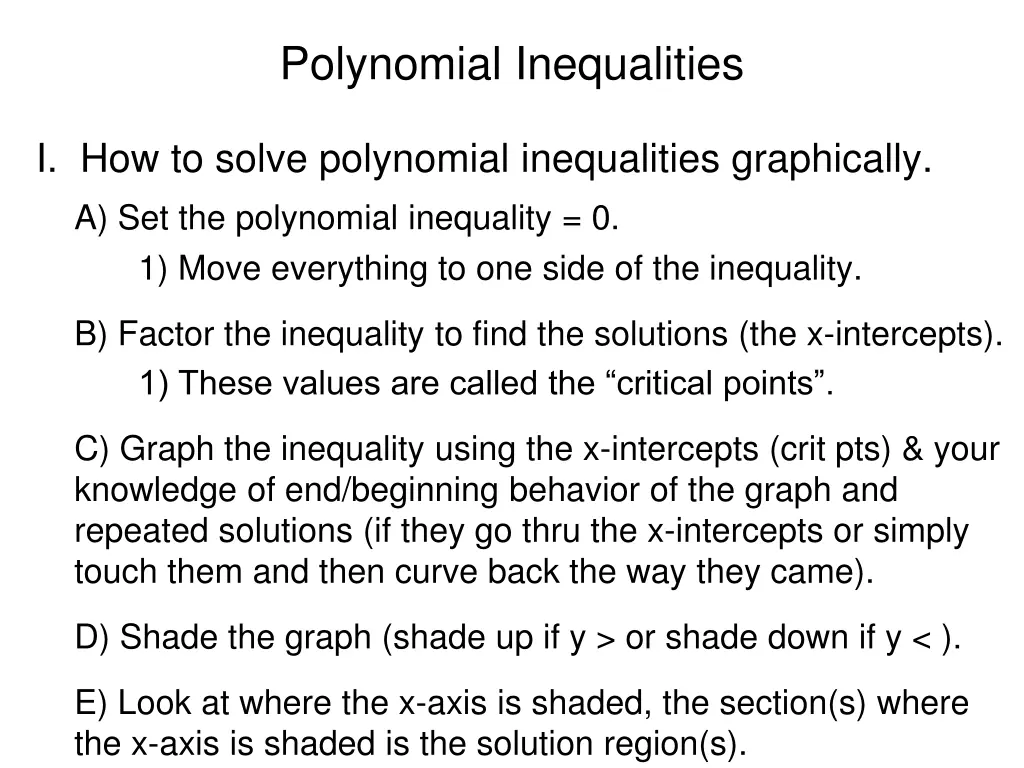
Solving Polynomial Inequalities Graphically: Methods & Guidelines
Learn how to solve polynomial inequalities graphically, including steps like setting the inequality to zero, finding critical points, graphing, and determining solution regions. Explore different approaches and techniques for effectively solving these types of inequalities.
Download Presentation

Please find below an Image/Link to download the presentation.
The content on the website is provided AS IS for your information and personal use only. It may not be sold, licensed, or shared on other websites without obtaining consent from the author. If you encounter any issues during the download, it is possible that the publisher has removed the file from their server.
You are allowed to download the files provided on this website for personal or commercial use, subject to the condition that they are used lawfully. All files are the property of their respective owners.
The content on the website is provided AS IS for your information and personal use only. It may not be sold, licensed, or shared on other websites without obtaining consent from the author.
E N D
Presentation Transcript
Polynomial Inequalities I. How to solve polynomial inequalities graphically. A) Set the polynomial inequality = 0. 1) Move everything to one side of the inequality. B) Factor the inequality to find the solutions (the x-intercepts). 1) These values are called the critical points . C) Graph the inequality using the x-intercepts (crit pts) & your knowledge of end/beginning behavior of the graph and repeated solutions (if they go thru the x-intercepts or simply touch them and then curve back the way they came). D) Shade the graph (shade up if y > or shade down if y < ). E) Look at where the x-axis is shaded, the section(s) where the x-axis is shaded is the solution region(s).
Polynomial Inequalities II. How to solve polynomial inequalities (alternate way) A) Set the polynomial inequality = 0. 1) Move everything to one side of the inequality. B) Factor the inequality to find the solutions (the x-intercepts). C) Arrange the numbers from smallest to largest ( to +). D) Test any number 1) Before the first solution (the smallest x-intercept). 2) Between every two solutions. 3) After the last solution (the largest x-intercept). E) If the number makes the statement true, then all numbers in that region make the inequality true. Is a solution set. F) If the number makes the statement false, then all numbers in that region make the inequality false. Not a solution set.
Polynomial Inequalities III. How to write solution sets of polynomial inequalities A) We use interval notation to represent the solution region. 1) The ( or ) symbol means not that # but right next to it. 2) The [ or ] symbol means to include that number. B) If the inequality is < or >, we use ( ) symbols. C) If the inequality is < or >, we use [ ] symbols. D) If the solution region goes towards infinity, we write 1) ( , or , + ) 2) infinity symbols always get a ( or ) on them. ( , 3] E) If we have more than one solution regions (that don t touch) then we use the UNION symbol U between each set. 1) Example: [-5 , 6] U [8 , + )
Polynomial Inequalities IV. Beginning/End behavior of Polynomials. A) End behavior (do this first): The sign of the leading term s coefficient determines if the f(x) goes up or down as x + infinity. (+ is up is down) B) Beginning behavior: The exponent, in conjunction with the end behavior, will determine how the graph begins. 1) If the exponent is even, then the graph begins the same direction as it ended. (both up or both down). 2) If the exponent is odd, then the graph begins in the opposite direction as it ended. (one up, the other down). a) Think: Exponent is odd = opposite & even = same. C) The graph will bounce at the x-intercept for any (x h)evenand pass through any x-intercept that has an odd exponent.


